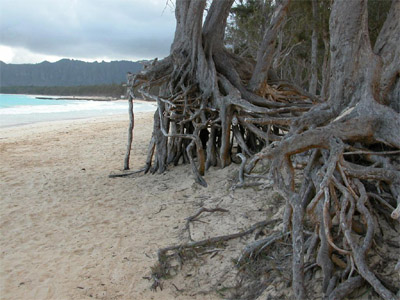HAWAII SEA TURTLES REMAIN PROTECTED UNDER
STATE AND FEDERAL LAWS
HONOLULU – The Department of Land and Natural Resources (DLNR), the U. S. Fish and Wildlife Service (USFWS), and NOAA Fisheries remind the community that sea turtles remain protected under State and Federal laws. In Hawai‘i, sea turtles are protected by the Hawai‘i Revised Statutes (Chapter 195D) and Hawai‘i Administrative Rules (13-124). Although Federal and State wildlife conservation laws differ in some respects, all prohibit actions that can harm, injure, kill, or otherwise disturb sea turtles without a permit.
The two types of sea turtles most frequently observed in Hawai‘i nearshore waters are the green and hawksbill sea turtle. The green sea turtle (Chelonia mydas) is listed as threatened and the hawksbill sea turtle (Eretmochelys imbricata) is listed as endangered under the Endangered Species Act (ESA). Three other listed species – loggerhead, leatherback, and olive ridley sea turtles – generally inhabit offshore environments in the region and are very rarely seen in Hawai‘i’s coastal waters.
“We want to remind the community that all sea turtles are still protected, and that both State and Federal consequences apply to anyone harming a green sea turtle,” said DLNR Chairperson William J. Aila, Jr. The public is urged to act responsibly and not attempt to touch, disturb, feed, pursue, ride, harass, harm, or otherwise injure these animals.
On February 16, 2012, NOAA Fisheries and the U.S. Fish and Wildlife Service (jointly referred to as the Services) received a petition to classify the Hawai‘i population of green sea turtle as a Distinct Population Segment (DPS) and evaluate that population for de-listing under the ESA. The contents of this petition are currently being reviewed to determine if the petition warrants further consideration. If so, a scientific review of the status of the species will be initiated.
While any person or organization may submit a petition to list or de-list a species, this action alone does not affect the legal status of that species. If the Services propose any changes to the listing status of green sea turtles in the future, public comments will be requested and considered before any final decisions about de-listing are made.
“Even though a petition for de-listing was filed, green sea turtles in Hawai‘i remain protected under State and Federal laws,” said Aila.
Sea turtles across the U.S. face threats including, but not limited to, illegal harvest, destruction and alteration of nesting and feeding areas, incidental capture in commercial and recreational fisheries, entanglement in and ingestion of marine debris, disease, vessel strikes, and climate change. To effectively address all threats to sea turtles, the Services have developed recovery plans to direct research and management efforts for each sea turtle species. In Hawai‘i, on-going sea turtle recovery activities include efforts to reduce and eliminate direct harvest of, and interactions with, sea turtles in nearshore and commercial fisheries; eliminate the threat of fibropapilloma (a tumor disease that can be harmful to sea turtles); protect important nesting and feeding areas; and reduce impacts from boat strikes, disturbance, and marine debris.
To report a sea turtle in distress, please call (808) 983-5730 or visit NOAA’s sea turtle stranding website
For more information on the DLNR visit www.hawaii.gov/dlnr
For more information on NOAA visit http://www.fpir.noaa.gov/
For more information on the USFWS visit http://www.fws.gov/pacificislands/teslist.html



